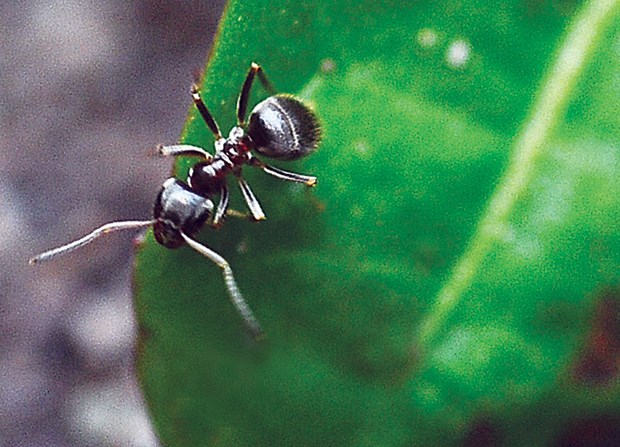Summer is the traditional season of pest control but winter is one of the best seasons to control certain pests in the garden.
Not all garden pests can be controlled during winter but many insects, such as scale, ants, thrips, whiteflies and a few others, can be controlled now.
The pest control methods I am going to outline are by no means traditional but they work and do not involve the use of poisonous pesticides. I have used these pest control methods for many years on some of my clients' plants and very successfully while I was the director at Park and Tilford Gardens.
Winter control of scale insects
Scale is a small softbodied insect that sucks sap from plant leaves causing a loss of health and vigour. Common scale species found in our region are Lecanium scale (Parthenolecanium spp.), oystershell scale (Lepidosaphes ulmi), San Jose scale (Quadraspidiotus perniciosus), brown soft scale (Coccus hesperidum) and cottony scale (Pulvinaria floccifera). Those scales are found on a wide range of fruit trees, ornamental trees, raspberries, yew hedging, conifers (like cedar), rhododendron and camellia.
Scale insects also defecate on the leaves of their host plant. Scale defecation, often called honey-dew, is rich in sugars that attract a fungus called sooty mould to grow on the defecation. Sooty mould appears as a blackish fuzz or coating on the leaves.
Traditional, poisonous control of scale involves the application of insecticides. My winter control method for scale involves using a garden hose with focusable nozzle or use of a pressure washer. If the infestation is severe, apply a very mild solution of dish soap, perhaps a few drops in one litre of water. Do not use too much dish soap or you will burn plant's leaves.
Baking soda can also be used at weak strength. Spray the stems and undersides of the plant's leaves and allow the solution to sit for five minutes. Next, use the garden hose to vigourously spray the stems and undersides of the plant's leaves to wash off the scale. Once on the ground, scale become food for soil insects.
It's crucial to control the water pressure, nozzle focus and distance from the leaf to prevent tissue damage, especially on stems and trunks. Controlling those factors is particularly important if you're using a pressure washer, which can strip bark and leaves off the plant. This is not a job for those who are too aggressive in their approach. Care, attention to detail and restraint are required for this procedure.
Ants in the garden
Now is the time to disrupt and remove ant colonies living in the garden. You have to know where the ant colony is located for this control to work. Locate the colony and remove any plants, lawn, pavers or rocks in the way of digging up the colony. Have on hand a plastic garbage bag and a shop vacuum.
Dig carefully down to the colony. Once you find the colony, vacuum up all ants and affected soil, but specifically vacuum up the small puffed-wheatlooking ant larvae. Put all vacuumed soil and ants into a plastic bag, seal the bag and dispose in the garbage.
Then, flood the excavation with water, wait 15 or 20 minutes, and refill the hole with soil and re-install plants, etc., as needed.
The advantage of February control of ants is the lower number of ants present, their reduced activity and the presence of overwintering larvae. Killing them now significantly lowers the population, if not killing the colony altogether, and without the use of poisonous pesticides to which many ant species are now immune.
Thrips and whiteflies
There are many different names for thrips, usually coinciding with the name of the plant they attack, like the potato, plum and pear thrip.
Thrip insects belong to the order Thysanoptera.
The most common species in our region is the western flower thrip (Frankliniella occidentalis), which attacks a wide range of ornamental, vegetable and fruit crops.
Thrips are a few millimetres long, and usually green-coloured, sometimes with orange or red strips on their bodies or wings. They suck sap from plants, causing speckling of
the leaf and declining health and vigour.
Whiteflies are obviously white and they attack a wide range of plants and cause distortion or malformation of new leaves by sucking sap.
Both pests can be controlled now by looking carefully at the undersides of plant leaves to find overwintering adults.
Winter populations are usually low and can be easily removed by hand or water wash. For severe infestations the entire host plant should be disposed of in the greenwaste bin.
Todd Major is a journeyman horticulturist, garden designer and builder, teacher and organic advocate. [email protected]



